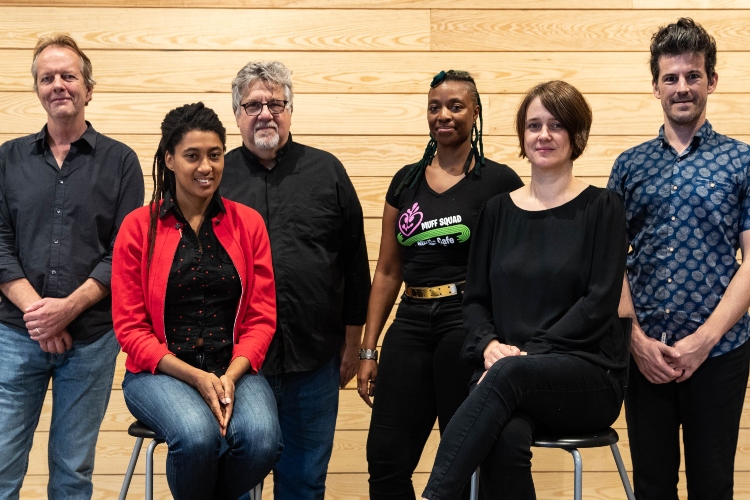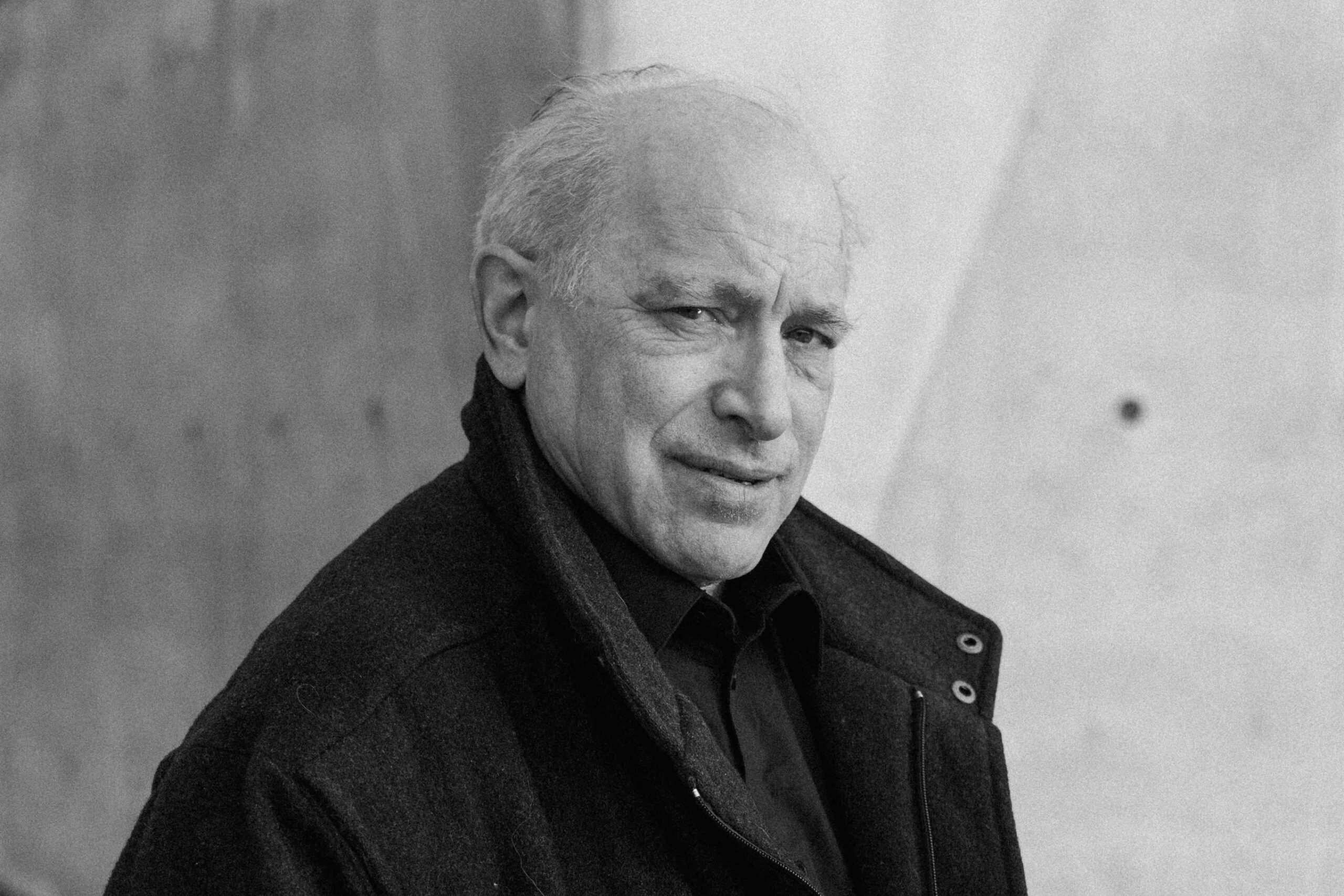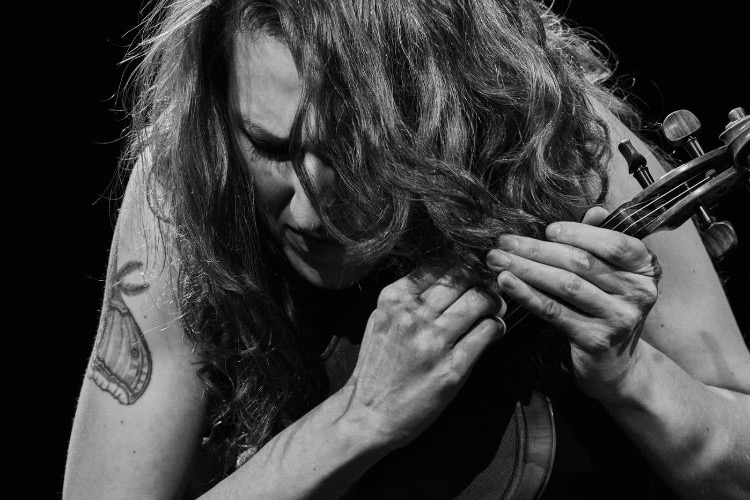Quiet Within: A Conversation with Ingrid Laubrock
|
Getting your Trinity Audio player ready...
|
Throughout its history, creative music has always been on a conceptual search for freedom. Ornette Coleman sought to move his music beyond traditional chords. Other artists- Wadada Leo Smith and Anthony Braxton, for instance – abandon notions of Western notation by utilizing graphic scores. But even the removal of such burdens, by themselves, is often inadequate to detach music from biases inherent in the environment of its creation. Often artists must distinguish between works that are truly unique to themselves and those which are merely derivative of their heroes, peers, or surroundings. Thus, if an artist wishes for their true voice to emerge, they must engage in an act of deep self-reflection. Ingrid Laubrock’s The Last Quiet Place (Pyroclastic, 2023) speaks to this introspection by openly seeking – despite the continually increasing difficulty of finding one – a refuge from external forces.
This inward focus allows the saxophonist to craft music from some uncharted space between avant-garde jazz, chamber music, and rock. The album’s eclectic string-heavy instrumentation – violinist Mazz Swift, cellist Tomeka Reid, guitarist Brandon Seabrook, and bassist Michael Formanek – and the ever-malleable drummer Tom Rainey allow the group to morph and adapt between stylistic surroundings at will. But the record’s finer moments come when they briefly question the timbral limits of an artist’s instrument of choice. Laubrock’s horn often finds an unexpected twin in Seabrook’s electric guitar. Quiet Place also creatively utilizes Laubrock’s distinctively lyrical tone to push the music in different directions than one may expect given the ensemble’s instrumentation. For instance, at around the three-and-a-half-minute mark of the title track, Swift and Reid’s parallel downcast lines give way to what briefly sounds like a remorseful bluesy vocal but is really the leader’s soprano.
But one should be careful not to misread the album’s title. The artist’s yearning for a moment of self-reflection does not mean she advocates self-centeredness. Indeed, much of the album is a commentary on how greed and avarice destroy the beauty of nature. Nor should one read the word “quiet” to suggest the music on the record is always gentle or soft. At times, it can be; at certain moments, the instrumentation is sparse, allowing air and space to emerge from the surroundings. But, as Laubrock mentions in our conversion, she never shies away from conflict. Many spots can be frenetic or impulsive.
Laubrock established herself as one of her generation’s most compelling voices in creative music long before The Last Quiet Place. But the album’s open abandonment of preconceptions of genre, blurring of textural distinctions, and unique compositional structures are a welcome contribution to her already fascinating discography. We sat down with Laubrock to discuss the album, her compositional process, and creative music more generally.
PostGenre: What is your compositional process?
Ingrid Laubrock: First, there’s always a very strange moment of panic where I try to figure out where to go. I then start to envisage what I’m writing. Or who I am writing for, if I know the group. I give myself a few days of literally walking – going on hikes or long bike rides- to empty myself. For example, I am in Wyoming, and right before we spoke, I was on a very long hike. Movement gives me an organic process to let ideas arise rather than my trying to force them, which seems to work best for me. I think I like to move around a lot because I grew up in the country.
I then scribble those ideas down. I have a book with me everywhere. Sometimes I write the ideas down on my phone. Or if I have an idea for a small fragment of music, sometimes I will sing it into my phone. Then I play the music. Sometimes I do it on the piano and other times on the saxophone.
PG: Since you mentioned hiking and bike riding, do you feel that inspiration tends to strike you more when you are out experiencing nature?
IL: Yeah, being outdoors helps me. But it’s not even nature. It can be Brooklyn. It has less to do with a specific environment and more with movement. I also practice a slow form of yoga where you hold poses for a long time. That type is a fairly long sequence with guided meditation at the beginning. Yoga gives me a different mindset. The most important thing is getting rid of the external noisy stuff to be able to hear what’s inside.
PG: Does that focus on meditative practices tie to The Last Quiet Place’s use of silence? The album is very intricate in its use of space between notes.
IL: Well, that is a certain aspect where nature provides guidance. For example, this hike I just took brought me to the mountains. There is not much civilization around there. I used my time in the mountains to try to tune into the super quiet sounds and where they came from within that space. In nature, you can hear the surround sound aspect of it all, with the natural dynamics of something being close or far. Those elements filter how I organize things. Then there are other natural occurrences like phasing, where rhythms layer on top of each other but are irregular. That irregularity also reflects how much chaotic stuff is going on in the world that is so difficult to escape.
PG: Making order out of chaos, which may also tie to your music. Many people unfamiliar with creative music find it chaotic upon first hearing it. But for those more familiar with freer musical expression…
IL: There’s always an order. I don’t avoid turmoil. I feel like it’s all part of both life and art. Density- the concept of multiple layers stating how many things can happen simultaneously- is important to me. I look for a certain kind of balance. So, to the extent, there is chaos in my music, I probably will want some space or silence or some voice to provide a balance. Similarly, with melody and harmony, I’m not one of those people who have renounced either concept. I like being able to use all of those elements in my music to balance things out. But I think that if you allow yourself not to be frightened by chaotic sounds, there’s a lot of beauty in it.
PG: Building off that idea of order coming from chaos, The Last Quiet Place addresses humankind’s interference with nature. Are humans merely creating chaos, or are they forming their own definition of order, one not always aligned with nature?
IL: We’re imposing ourselves on nature all the time, just by being human beings. In a way, we oppress nature because we keep using it. There is no pristine nature left as it originally was. Or at least very little. I think we’re trying to tame nature constantly. As a species, we try to create the perfect circumstances for ourselves at all costs, often without seeing the consequences.
I’m not a scientist, but to reduce our impact on nature, I think we should first aim not to take more than we need. Greed seems to be a big factor in all of this. Humans should also learn to embrace a certain kind of discomfort, so we don’t always have to live in a way that creates optimized surroundings for us.
PG: Though, there are also good parts of humanity; art and charity being two aspects. How do you separate the beneficial from the detrimental?
IL: Well, I guess we all have everything in us, and recognizing that fact is a good start. I think it is important we all self-reflect and reduce our own bad elements. Observe ourselves instead of focusing only on the flaws of others.
PG: But that also does not mean ignoring or otherwise disengaging with others. One thing that particularly stands out on The Last Quiet Place is the strong dialogue between you and Brandon Seabrook. You have worked with other guitarists before – Mary Halvorson, for example. What do you feel Brandon brought to the project compared to another guitarist?
IL: Every musician is always different, and the things that make them unique come out in their music, especially if you allow them to improvise a lot. I had this really strange connection with Brandon, even very early on. I think the first time we played together was with Andrew Drury’s Content Provider, and you could feel that connection even back then. We seem to have a very shared sense of timing and inner rhythm. We can string together several ideas and can flip between these ideas easily. He also has a very broad dynamic range, which is something I also embrace. So, there has always been a sense when we play together that it felt as if we were one instrument ripped into two, which is a very fun sonic world to be in.
PG: When you were composing pieces for the album, did you purposely craft them in ways likely to bring out those similarities, or did they just naturally come out in the studio?
IL: I didn’t specify anything. In terms of improvising or solos. I didn’t specify anything for Brandon or myself apart from occasionally a form or time to play over.
PG: Another musician you seem to collaborate well with is Tom Rainey. In addition to being married, you also record together often.
IL: Tom is such a master drummer and also somebody who gets very involved compositionally. He shapes the music and has such an amazing instinct for when to introduce something new or change direction. He’s such a master.
PG: What was your inspiration behind revisiting “Chant II” and adapting it to a larger group compared to when you recorded it as a duo with Tom on Utter (Relative Pitch, 2018)?
IL: It was originally written in a way that could make it easily adaptable to any size group. The duo version Tom and I did is just an iteration of the modular piece. The piece itself just consists of pictures in a certain direction. The composition is called “Chant” because it is intended to imitate speech. In the version on The Last Quiet Place, I took the original modular part, put notes to it, and turned it into a vamp that works with the pictures in it. So I mostly repurposed the material and then wrote an introduction that imitates the speech-like thing of the original version.
PG: Do you often use sounds like speech patterns that most would likely not consider musical as a basis of your compositions?
IL: Well, there’s a sound in my head that first attracted me to music when I was a young child. My parents would take me to church. It was one of the old European churches made of stone. I would hear the sound of people praying. The priest would begin, and everybody else would fall in. The sound would reverberate around the space. The voices were not completely together but, at the same time, somehow were. There was a naturally fading thing to their sound that I loved as a child. I’ve also listened to Buddhist monks chant together and produce a very visceral sound. That sound has always been attractive to me.
PG: In terms of sounds you heard as a child, your parents were also classical musicians, correct?
IL: Yeah, both were amateur classical musicians.
PG: Do you feel that growing up in that environment shaped the more classical-influenced elements of your works?
IL: There are certain elements on this album and others I’ve done that maybe pull from more classical traditions. That was certainly my early sound world. It’s something I still have in my ear.
PG: Do you sense any significant difference between the classical, jazz, or other elements of your work, or are they just slightly different approaches to the same thing?
IL: I’ve been outside of the pressure to categorize almost all my adult life, I think. Though I am also under no illusion that I’m ever going to play at the Super Bowl. [Laughing]. My music focuses more on broader creative expression, regardless of what market forces may wish to call it.
PG: Which, in a way, ties into the title of one of the pieces on The Last Quiet Place, “Grammy Season.”
IL: Yeah, slightly ironic title. I mean it’s not a bad thing that [creative music] is not commercial music. But it’s also a shame that most people do not get exposed to this music. I don’t think people would be scared of it if they experience it in an unbiased way. I mean, young children aren’t scared of it.
PG: Why do you think so many people shut out more creative music?
IL: I don’t know. I really don’t know. When I was a very young child, maybe seven or eight years old, I would listen so indiscriminately. I would listen to classical music, but I would also listen to whatever pop was on the radio.
I would tune into three jazz programs that happened to be on the radio. And I loved it all. It was this wild music. I had no idea what exactly it was. I didn’t even know what instruments I would hear. But I taped those shows and often re-listened to them. As a teenager, I think I started to feel a little more peer pressure about what kind of music I was “supposed” to like. That is where I think marketing and the business side of music come in. A little later, I got away from those pressures again, but there were a few years where I felt like I should try listening to this music that everybody in society told me I should like because I wanted to fit in with my peers.
PG: Since you grew up in Germany, the wild improvised music you mentioned, presumably included artists like Peter Brötzmann or Alexander Von Schlippenbach. Later you moved to the United Kingdom and then to the United States. Do you sense a difference in the free or improvised music that came out of these different places?
IL: Yeah, I think it’s all very different. I wasn’t so discerning when I was young. I mean, I didn’t really associate any particular musicians with what I would hear. But I think that when you look at improvising musicians, the music changes in every country. There is a shared tendency in improvised music to think about the space around you. Every country develops its own kind of sound because the environment and culture are different in every country. Even different cities have their own sound.
PG: So, in a way, you may need to step away from the scene you are in and look inward to find ways to better express yourself without the biases of your location.
IL: I think there’s always a certain amount of clutter that you must work through to get to a grain of originality. I think all artists are looking for something within themselves. We have techniques, our instruments, and all the tangible stuff of sounds like notes and rhythms. But there’s also something that lives in every person that is their own little gift. Something that is a little part of them and them alone. I think solitude and quiet are how I get in touch with not thinking about deadlines or pleasing a specific person. That quiet space, if you can find it, is what gives you the peace of mind to allow you to be in touch with yourself.
The Last Quiet Place will be available on March 31, 2023, on Pyroclastic Records. More information on Ingrid Laubrock can be found on her website.




3 thoughts on “Quiet Within: A Conversation with Ingrid Laubrock”